
Agnes Muthspiel (born Agnes Gahbauer: 8 February 1914 - 3 May 1966) was a Salzburg painter, representative of the "Salzburg Group" of artists that came to prominence during the 1950s. [1] [2] [3] [4]

Agnes Muthspiel (born Agnes Gahbauer: 8 February 1914 - 3 May 1966) was a Salzburg painter, representative of the "Salzburg Group" of artists that came to prominence during the 1950s. [1] [2] [3] [4]
- "In the context of [Agnes Muthspiel's] work, "naive" means the unbroken unswerving direct way in which she translated her everyday vision of her life experience of things into painting. Everyday life for her was an intensive thing ... Agnes Muthspiel is the painter of a world in decline, which she neither mourns nor romanticises. She herself reaches out into the world: she herself was born in it."
- "Naiv bedeutet, auf sie angewandt, die ungebrochene, unabgeleitete, direkte Art, mit der sie ihre Lebenserfahrung ihren alltäglichen Blick auf die Dinge in Malerei umsetzte. Ihr Alltag war intensiv. ... Agnes Muthspiel ist die Malerin einer untergehenden Welt, der sie aber nicht wehmütig oder romantisch nachblickte. Sie reichte selbst noch hinab, war dort eingeboren." [3]
Agnes Gahbauer was born in Salzburg, the eldest daughter of Heinrich and Agnes Gahbauer. She attended junior school and then the so-called "Akademisches Gymnasium" (secondary school) in the city. In 1938, she married Dr. Hans Muthspiel, a junior judge. He was killed just three years while serving as a soldier on the Russian front. During the war years she received instruction at the cathedral presbytery, possibly in anticipation of entering a religious order. Later she was forced to relocate to Hanover. After the war she spent two terms studying Ethics and Logic as a Philosophy student at the University Theology faculty, back in Salzburg. [2] There is no indication that she ever became a nun or completed her degree course, however.
In social terms, during the post-war years the young widow associated with a number of artists, such as Max Peiffer Watenphul, Caspar Neher and Herbert Breiter. Agnes Muthspiel herself became a self-taught artist and, starting in 1950, enjoyed growing success internationally. [2] Her early work respected the newly rediscovered tradition of late expressionism, but she increasingly freed herself from fashionable preconceptions and became, in the best sense, a "naive artist". After 1974 she came to be seen as a precursor of the short-lived "Salzburger naiven" artistic movement. [5] Agnes Muthspiel painted principally with oil paints, but there were also watercolours, sketches and prints. She loved to produce paintings of her home city, favouring in particular its various towers and semi-formal gardens. There were paintings of her own garden. There were also paintings of Rome, a city for which as a committed catholic she felt a special affinity, and of the island of Ponza which she visited frequently. [6]
Agnes Muthspiel became ever more well connected socially among Salzburg's artistic-intellectual elite. Her circle of friends included the sculptor Toni Schneider-Manzell, the composers Gottfried von Einem and Carl Orff, the poets Werner Bergengruen and Gerhard Amanshauser, along with fellow artists Eduard Bäumer and Paul Flora and, indeed, the iconic polymath-dramatist Bertolt Brecht. [2]
In 1966 Agnes Muthspiel was a recipient of the Theodor Körner Prize. [7]

The Österreichische Galerie Belvedere is a museum housed in the Belvedere palace, in Vienna, Austria.
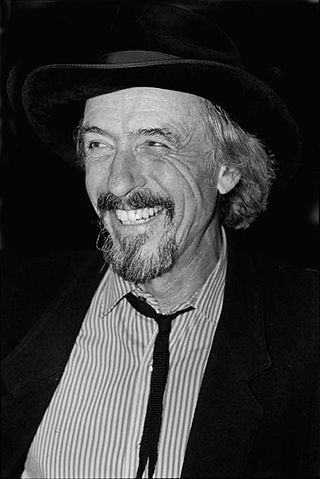
Arik Brauer was an Austrian painter, printmaker, poet, dancer, singer-songwriter, stage designer, architect, and academic teacher.

Josef Danhauser was an Austrian painter and one of the prominent artists of Biedermeier period, along with Ferdinand Georg Waldmüller, Peter Fendi, and others. Danhauser's works, which went largely unappreciated in his time, dealt with moralising subjects and had a clear influence of William Hogarth.
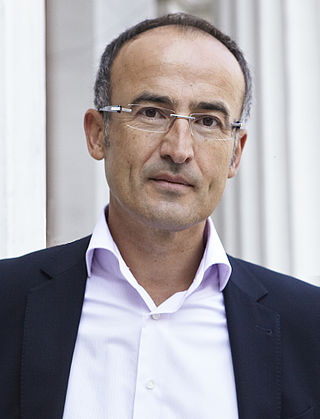
Tobias G. Natter is an Austrian art historian and internationally renowned art expert with a particular expertise in "Vienna 1900".
Franz Rosei is an Austrian sculptor and draughtsman. His brother is the writer Peter Rosei.
Ilse Haider is an Austrian artist. She focuses on photography and her photographic works use three dimensional surfaces. She has received a number of awards for her work and her work has appeared in exhibitions throughout Europe and the United States.

Broncia Koller-Pinell was an Austrian Expressionist painter who specialized in portraits and still-lifes.

Portrait of Père Paul, also known as Monsieur Paul or The Chef, is a painting by Claude Monet.
Richard Hirschbäck was an Austrian painter. He was a founding member of the Austrian artist group Gruppe 77.
Hildegard Joos was an Austrian painter and is known as the "Grande Dame" of geometric abstraction and constructivism in Austria.

Margarete Hamerschlag was an Austrian artisan, painter, author and illustrator.
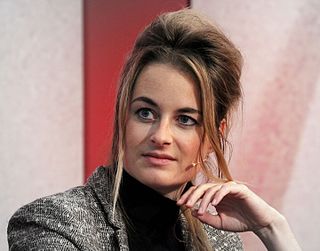
Teresa Präauer is an Austrian writer and visual artist.

Wilhelm Thöny was an Austrian painter, illustrator, graphic artist and etcher.
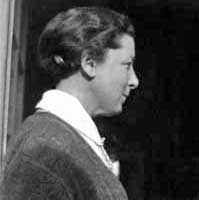
Helene von Taussig (1879-1942) was an Austrian painter.
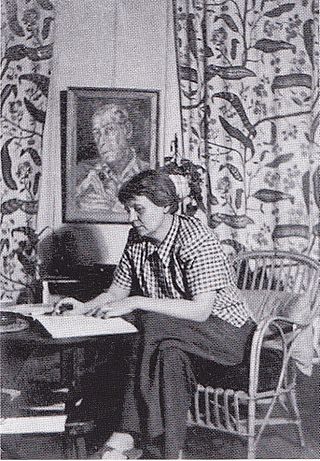
Trude Waehner (1900–1979) was an Austrian painter.
Herbert Breiter was a German-born Austrian painter and lithographer. He is known, in particular, for his landscape paintings, his "atmospheric scenes" ("Stimmungsbilder") and for the many views of Salzburg, his adopted home city, that he produced. His surviving output also includes still lifes and portraits.
Bruno Grimschitz was an Austrian art historian and museum director who belonged to the Nazi party.

Agnes Husslein, also Agnes Husslein-Arco, is an Austrian art historian and art manager.
Friedrich Maximilian Welz was an Austrian art dealer and Nazi Party member investigated for art looting.
Ulrike Lienbacher is an Austrian artist. She works in various media and lives in Salzburg and Vienna.
{{cite journal}}: Cite journal requires |journal= (help)